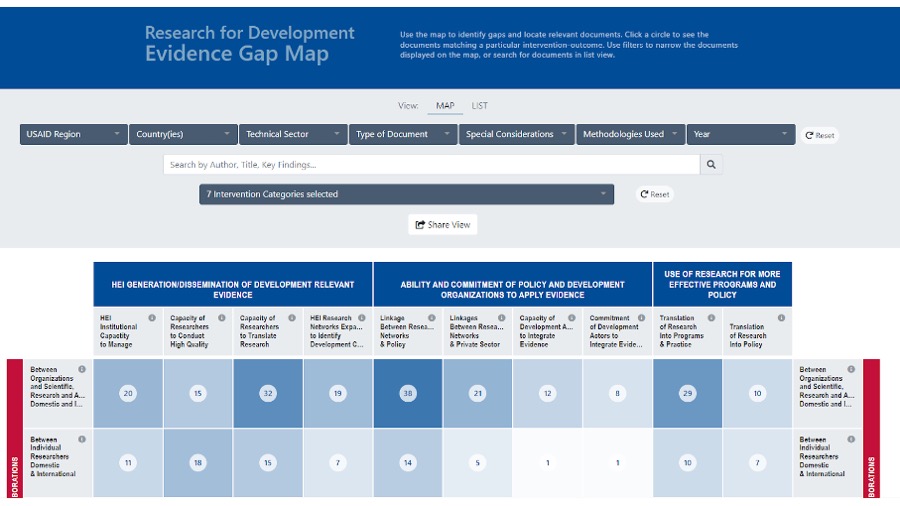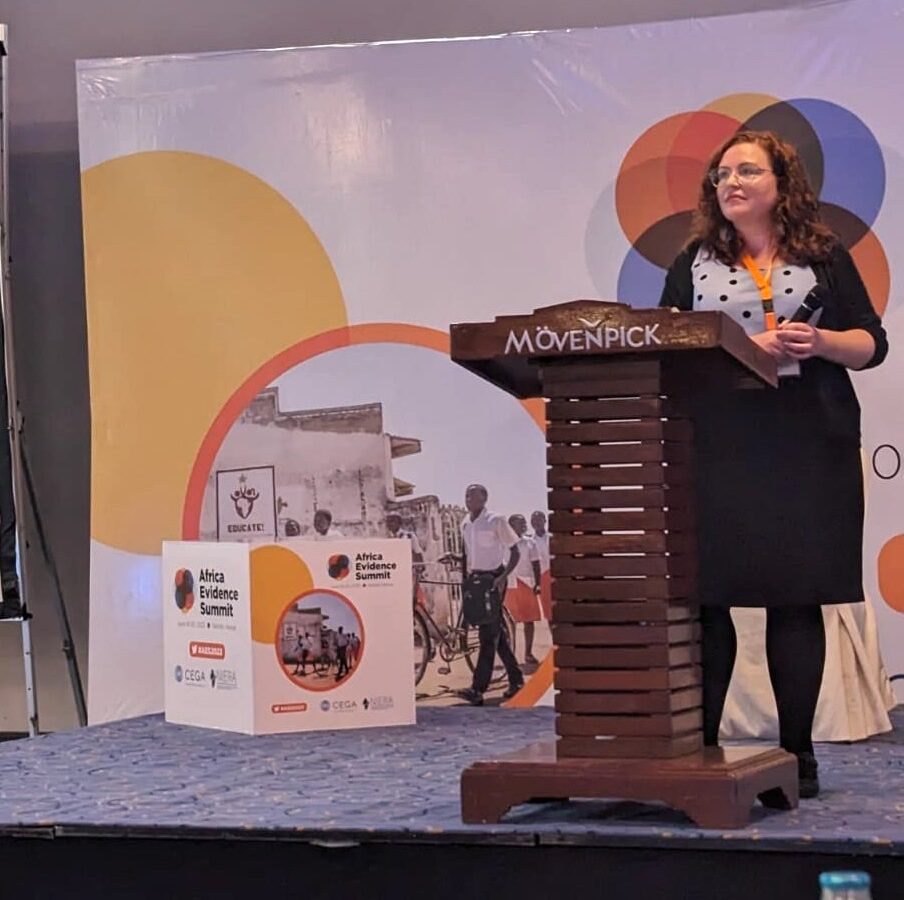Imagine you are a private-sector engagement researcher supporting the conception of a new project. As you contribute to the project’s design, you can consult a handy visual that lays out what evidence is still unknown, along with what is known about private-sector engagement. This tool allows you to quickly assess the available evidence and integrate it into the project’s design to ensure it is effective and can have greater impact. Though it sounds almost too good to be true, this tool exists. It is called an evidence gap map.
The U.S. Agency for International Development (USAID) champions evidence use and collaborating, learning, and adapting in programming. At the recent Africa Evidence Summit, I was fortunate to participate on behalf of the Kenya and East Africa Mission as part of my role as a Program Cycle Mechanism Specialist. I presented evidence gap maps as a key tool that helps address evidence use and bridge research and action. The summit was a valuable opportunity for engaging with networks of international development organizations and practitioners to share best practices and tools.
What are evidence gap maps?
These are visual aids that systematically summarize the state of existing evidence on a specific topic or intervention. Evidence gap maps provide an overview from which to dive deeper. They might appear as a matrix, like a color-coded table. Evidence gap maps can be time and resource intensive to produce, but once created, they can be simple to update and maintain. Most importantly, they can provide long-term benefits for organizations that integrate evidence into their work.
 Screenshot of USAID’s Research for Development Evidence Gap Map.
Screenshot of USAID’s Research for Development Evidence Gap Map.
Africa Evidence Summit
The summit, held in Nairobi from June 19 to 20, 2023, is an annual conference in its eleventh year. It is organized by the Center for Effective Global Action at the University of California, Berkeley, and the Network of Impact Evaluation Researchers in Africa. The event convenes East and West African scholars, U.S.-based academics, policymakers, and practitioners to discuss new ways to integrate evidence into decision making. The organizers invited the Kenya and East Africa Mission to co-deliver a session on the Agency’s use of evidence gap maps. As a Program Cycle Mechanism Specialist embedded with the Mission, I attended the summit and supported this session, sharing USAID’s experience and insights. I emphasized how the development community can draw on and contribute to the evidence gap maps that already exist and stressed the tool’s powerful and multiple uses for bridging the research-to-action gap, such as:
- Aiding research planning by identifying gaps in the existing evidence base, which helps organizations and teams set research agendas and prioritize studies.
- Facilitating problem or proposal refinement by synthesizing what is known and unknown, which ensures evidence is integrated from the beginning of a project.
- Promoting stakeholder engagement by facilitating collaboration and knowledge sharing on a common platform or as a common effort.
Because these uses can be taken up by various stakeholders—from researchers to policymakers—the Africa Evidence Summit was a pertinent venue for USAID to contribute its expertise and learn from others. I also experienced firsthand how knowledge is transmitted within the development community—how each of our organizations is a source of evidence waiting to be used if only we know how to collectively access it.



